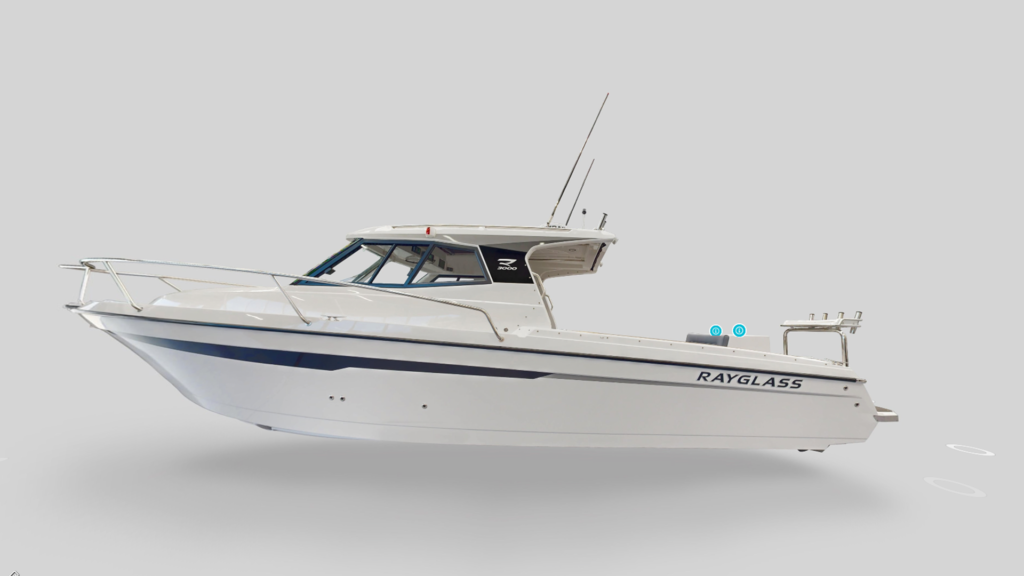In the world of digital representation and immersive experiences, two technologies have emerged as frontrunners: LiDAR 3D scanning and 360° virtual tours. However, each technology comes with its own set of advantages and disadvantages, making them suitable for different purposes and preferences. Here is a summary of what you should know:
LiDAR 3D Scanning: LiDAR stands for Light Detection and Ranging. The technology has gained significant traction in various industries due to its ability to capture highly detailed 3D models of environments.
ADVANTAGES:
1. High Precision: LiDAR scanners emit laser beams that measure distances and create precise 3D representations of objects and spaces. This high level of accuracy makes it ideal for applications where precise measurements are crucial, such as boats and complex engineering pieces.
2. Detailed Point Clouds: LiDAR generates point clouds consisting of millions of points, each representing a specific location in the scanned area. These point clouds can be manipulated and analyzed to extract valuable data, such as dimensions, volumes, and surface textures.
3. Versatility: LiDAR scanners can capture both indoor and outdoor environments with ease. Whether it’s a small room or a vast landscape, LiDAR technology can accurately capture the surroundings, making it suitable for a wide range of applications.
DISADVANTAGES:
1. Cost: High-quality LiDAR scanners can be expensive to acquire and operate, making them less accessible for individuals and small businesses.
2. Complexity: Processing and interpreting LiDAR data require specialized software and expertise. This complexity can pose challenges for users who are not familiar with the technology.
3. Time-consuming: LiDAR scanning typically takes more time compared to other methods due to the need for multiple scans from different angles to capture the entire area comprehensively.
360° Virtual Tours: provide immersive experiences that allow users to navigate and explore environments from the comfort of their own devices.
ADVANTAGES:
1. Accessibility: Virtual tours can be accessed from anywhere with an internet connection, making them convenient for remote viewing. Users can explore properties, landmarks, and attractions without physically being present at the location.
2. Engagement: Virtual tours offer interactive features such as hotspots, multimedia content, and guided tours, enhancing user engagement and providing a more immersive experience compared to static images or videos.
3. Cost-effectiveness: Creating virtual tours is relatively affordable compared to LiDAR scanning. There are various software platforms and services available that allow users to create virtual tours using panoramic images captured with consumer-grade cameras or smartphones.
DISADVANTAGES:
1. Limited Detail: While virtual tours provide a visually immersive experience, the level of detail is often limited compared to LiDAR scanning. Fine textures and fine details may not be captured as accurately, especially in environments with complex geometry.
2. Dependence on Photography: The quality of a virtual tour largely depends on the quality of the panoramic images used to create it. Factors such as lighting conditions, camera settings, and image stitching can affect the quality of the tour.
3. Lack of Measurement Data: Unlike LiDAR scanning, virtual tours do not provide precise measurements or point cloud data. This limitation may be a drawback for applications that require accurate spatial information, such as architectural planning or forensic analysis.
CONCLUSION:
As you have read, both LiDAR 3D scanning and 360° virtual tours have both advantages and disadvantages:
LiDAR scanning excels in capturing highly detailed 3D models with precise measurements, making it ideal for professional applications that require accuracy and reliability… like the boating industry.
On the other hand, virtual tours provide accessible and immersive experiences for remote exploration, offering a cost-effective solution for showcasing different spaces, such as: properties, attractions, and cultural heritage sites.
Ultimately, the choice between these technologies depends on the specific requirements of the project and the desired level of detail and interactivity.

